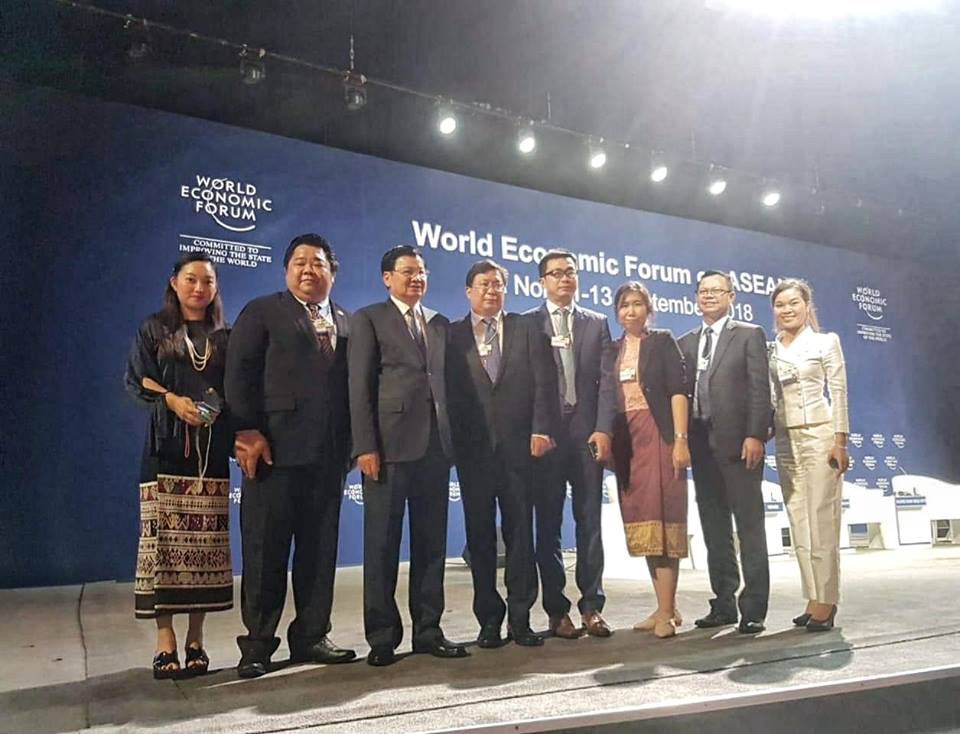International experts continue investigative efforts alongside Lao regulators looking into the causes of the fatal Xe Pian Xe Nam Noy dam collapse in Attapeu province on July 23, Laos’ PM Thongloun on Wednesday confirmed to an audience of delegates from the ASEAN region and beyond in Vietnam’s capital Hanoi.
PM Thongloun’s response came in following the session moderator’s question on the topic at the World Economic Forum on ASEAN being held from September 11-13.
Speaking from a panel of Mekong government leaders including those from Cambodia, Myanmar, Thailand and Vietnam on topics including the 4th Industrial Revolution, the Prime Minister told the audience that the investigation was part of the ongoing response to the collapse and flash flood effects in Sanamxay District, Attapeu Province.
“At Xe Namnoy XePian hydro dam, that we are talking about in Attapeu province, this has not been completed and not exporting electricity yet,” Dr Thongloun said, speaking with the benefit of simultaneous interpretation from Lao to English.
“We have also invited experts to investigate the reason behind the collapse of the saddle dam. After the incident in July, we have announced the suspension of new hydropower projects (and) we are also inspecting those projects under construction.”
While Prime Minister Thongloun reiterated his dismissal of the widely used “Battery of ASEAN” moniker as an overstatement of Laos potential, he said hydroelectric power generation and transmission capacity development for domestic and export use was still very significant to the nation’s present and future fortunes nonetheless.
“Laos cannot become a “battery of Asia” because our capacity to develop electricity in Laos, compared to the demand of ASEAN neighboring countries, is still very limited,” Dr Thongloun told the audience at the panel discussion.
“But Laos has the capacity to leverage this potential in terms of water resources in Laos. We can produce electricity that is sufficient for Laos and that can be exported to our neighbouring countries.”
As such, looking forward, the PM said the country needed to refocus efforts on the questions of better regulating the planning, design and implementation of hydropower with partners to ensure safety and favourable socio-economic outcomes.
“In terms of electricity development, we have this commitment to make sure that from now on development of hydropower projects should be based on careful planning and good design,” the PM said.
“In terms of project development especially mega projects, we have to involve regional and international stakeholders to join us in the study of project feasibility, such as under the MRC framework.”
“We have to ensure socio-economic aspects and the impact of the project potentials on society. However, building hydropower projects is a good way to generate income and renewable, clean energy.”
He highlighted the case of the World Bank-supported Nam Theun 2, located in Kammouan province, as a good example of best practice.
“We have good model projects such as Nam Theun 2 hydropower project. Nam Theun 2 was a project that started many years ago with many parties such as WB and other financiers and it has made great achievements. We have learned a lot from this project and also the incident in the Xe Pian/Xe Nam Noy hydropower project.
“The incident in July is something we will continue to take into account in terms of moving forward. Laos will continue to study other options for renewable and clean energy such as solar panels and wind turbines as sources of electricity production.”



